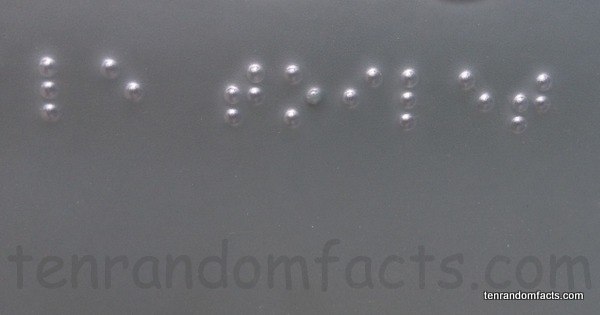Letters aren’t the only way to read – try reading braille!
- Braille is an alphabet-like system of ‘letters’ that enables the blind or visually impaired to read through the sense of touch, as opposed to sight.
- Braille primarily translates the letters of a language using a specific placement of raised dots, generally six dots in a two (wide) by three (high) grid, and is usually read by the touch of fingertips.
- Braille is based on a rejected dot communication system designed by Frenchman Charles Barbier in the the early 1800s, known as ‘Ecriture Nocturne’ or ‘night writing’, developed for use by Napoleon’s soldiers to ‘talk’ with each other without making noise or using light at night.
- The night writing system became known to Louis Braille, a French boy, in 1821 in Paris, who identified its flaws and by 1824, at age 15, had reworked it into braille for the blind by reducing the grid from twelve to six dots, and encoding letters rather than sounds.
- Two grades are typically used to classify braille; Grade 1 is usually used for encoding letters, while Grade 2 is generally an abbreviated and shortened version of words, without the need to spell each letter out as found in the first grade; though there is a Grade 3 system, which is usually one’s own shorthand version of the writing system.
- Although braille differs in various countries, depending on the language, it is generally ordered and based on the original French version and alphabet, to reduce confusion; while a music notation system is also available, though it has also traditionally varied from country to country.
- Braille is typically written using a typewriter, embossing printer, or a slate and stylus, although other printers are also used, and various handheld embossing devices with adhesive tape are also manufactured, that are popular for home use.
- In both the United Kingdom and the United States, the large majority of visually impaired people cannot read braille, and the number of people learning the system has declined due in part, to new technologies like computerised screen readers being utilised.
- Medicine labels in the United Kingdom are required to be embossed with braille, and while some other manufactured products and public signs include this writing system, most products and signs do not.
- According to statistics, blind people fluent in braille are far more likely to be employed, than those who are not.
Bibliography:
Braille, 2016, Wikipedia, https://en.wikipedia.org/wiki/Braille
Braille: Deciphering the Code, 2014, American Foundation for the Blind, http://braillebug.afb.org/braille_deciphering.asp
What is Braille?, 2015, American Foundation for the Blind, http://www.afb.org/info/living-with-vision-loss/braille/what-is-braille/123







